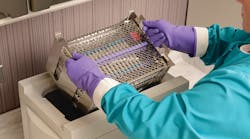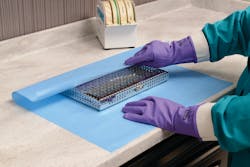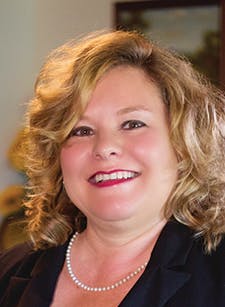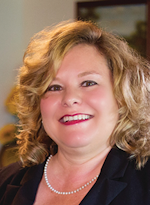Time is money: Increasing productivity and safety through instrument management systems
As compliance consultants, safety is a premier focus in our business. We evaluate rules and regulations and create the necessary programs to help dental practices achieve compliance with regulatory bodies such as the Occupational Safety and Health Administration (OSHA).
We recognize the cost factor of regulatory compliance. Most dentists agree that allocating time to train employees, incurring the cost to implement systems, and investing time to build out the corresponding safety policies can translate into expenses. On the other hand, time is money. With the right systems in place, your dental practice can actually save money and achieve a safe place to work.
Let us take a 360-degree view of your dental practice and focus on the sterilization area to see how you can optimize safety and overall efficiency and, at the same time, save money.
The sterilization area is basically the “hub” of clinical activities. Contaminated instruments are transported into the central sterilization area and the packaged sterilized instruments flow back out. But this is too easily stated. Anyone who has ever served as a dental assistant or dental hygienist recognizes that there are multiple steps that consume valuable time in between patient treatment and the final result of sterilized, packaged instruments.
As a safety consultant, I analyze workflow. In numerous dental offices, I see clinical team members frantically rushing into the sterilization area and often employing antiquated processes. For example, dental offices using a flat plastic tray to hold the instruments waste valuable minutes per patient. Contaminated instruments must be removed from the tray by hand and placed into the ultrasonic unit or automatic washer. This step places the employees at increased risk for injuries as they are having to handle the contaminated sharps once again. In addition, the tray must then be disinfected.
With the use of an instrument management system, the assistant or hygienist merely places the entire cassette into the ultrasonic unit or automated washer (figure 1). There is no additional handling of the contaminated instruments or having to disinfect the tray. This alone is calculated to save three minutes per patient, based on time studies.1 Plus, the team member is not having to handle the contaminated instruments additional times, which promotes safety. According to the Centers for Disease Control and Prevention (CDC), it costs practices approximately $3,000 per incident to manage employees’ sharps injuries.2 Therefore, we need to make physical changes in our program and administrative changes that involve policies.
Let’s evaluate our work exposure control plan. According to OSHA, work practice controls and engineering controls should be discussed in your plan. A work practice control reduces the likelihood of an exposure to a bloodborne pathogen by altering the way you perform a task. For example, OSHA prohibits recapping a needle with two hands.3 A work practice control is the one-hand scoop technique.
An engineering control is a means to isolate or remove the hazard using some type of device. Using the same example, an engineering control would be a needle recapper device such as a Jenker needle recapper. Another example of an engineering control is the instrument management cassette. If you are using the cassette system, make note of such in your plan. An OSHA official will evaluate these processes during a site visit.
One of my least favorite tasks when I served as a dental assistant years ago was sorting instruments and placing them in autoclave bags. My time would have been better spent with my patients. Minutes matter when you are running on an already tight schedule or have worked in an emergency patient.
If you are using an instrument management system, the instruments are already organized by type of procedure in the cassette. You only need to rinse the cassette following the ultrasonic stage, allow to it dry, and wrap or place it into a pouch (figure 2). Time is saved. This translates into less patient wait time and increased safety. This adds a few more valuable minutes to our busy days. It also makes onboarding easier. I’ve audited offices that take digital photos of tray setups to help keep the setups consistent and help new hires learn their process. Using the cassette system, the correct instruments are always in place.
Another factor I consider is organization and appearance. A messy sterilization area, stained plastic trays, and multiple clinical team members bumping into one another competing for space are not desirable.
You can better organize your sterilization area by implementing the instrument management system because it requires less counter space. This frees up a place to do other tasks. As a consultant, I enjoy seeing countertop space free of clutter.
Broken instruments, chipped instruments, and lost instruments cost the practice money. Securing the instruments in a locked cassette is a means to protect your valuable investment.
With several minutes saved in managing instruments per patient, you can spend more time with your patients . . . more time educating patients and building positive relationships. I encourage dental team members to talk to patients about their sterilization procedures and instrument management systems. Let them see what sets you apart from your competitors, particularly during an era of highly publicized infection control breaches. Affirm your infection control process and let patients know you care about their safety and that of your employees during every patient visit.
Time is money. Implementing better systems and processes saves valuable time of clinical team members. Making an investment in the instrument management system will actually provide you a return that you will never regret. In the end, we are working toward a common goal: safety for our employees and safety for our patients. Saving money and time is an added bonus.
References
1. IMS Selling Guide. Hu-Friedy website. https://www.hu-friedy.com/sites/default/files/9697_IMS-381I_Selling_Guide_1214.pdf
2. Centers for Disease Control and Prevention. Sharps Injury Prevention Workbook. https://www.cdc.gov/Sharpssafety/pdf/WorkbookComplete.pdf.
3. United States Department of Labor Occupational Health and Safety Administration. Bloodborne pathogens standard. 29 CFR 1910.1030. https://www.osha.gov/pls/oshaweb/owadisp.show_document?p_id=10051&p_table=STANDARDS. Effective March 6, 1992.










